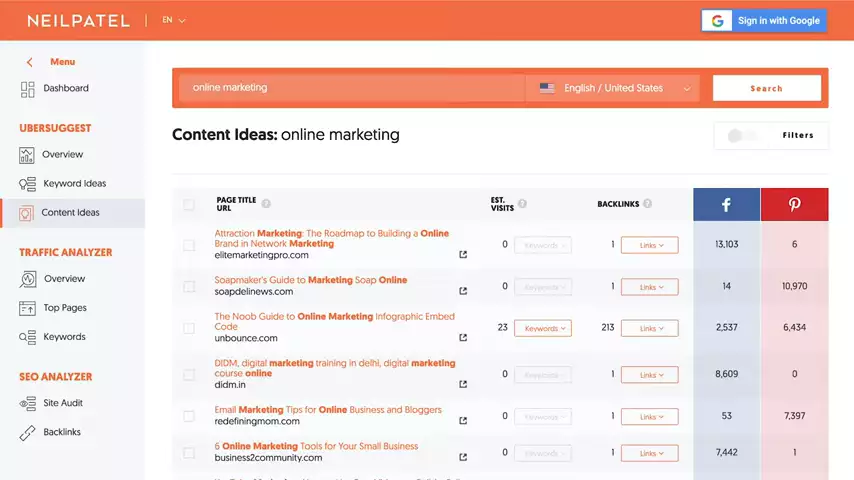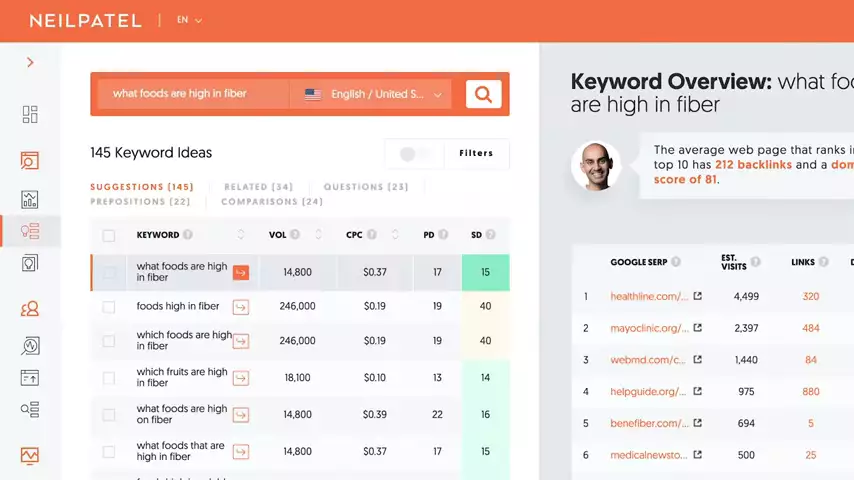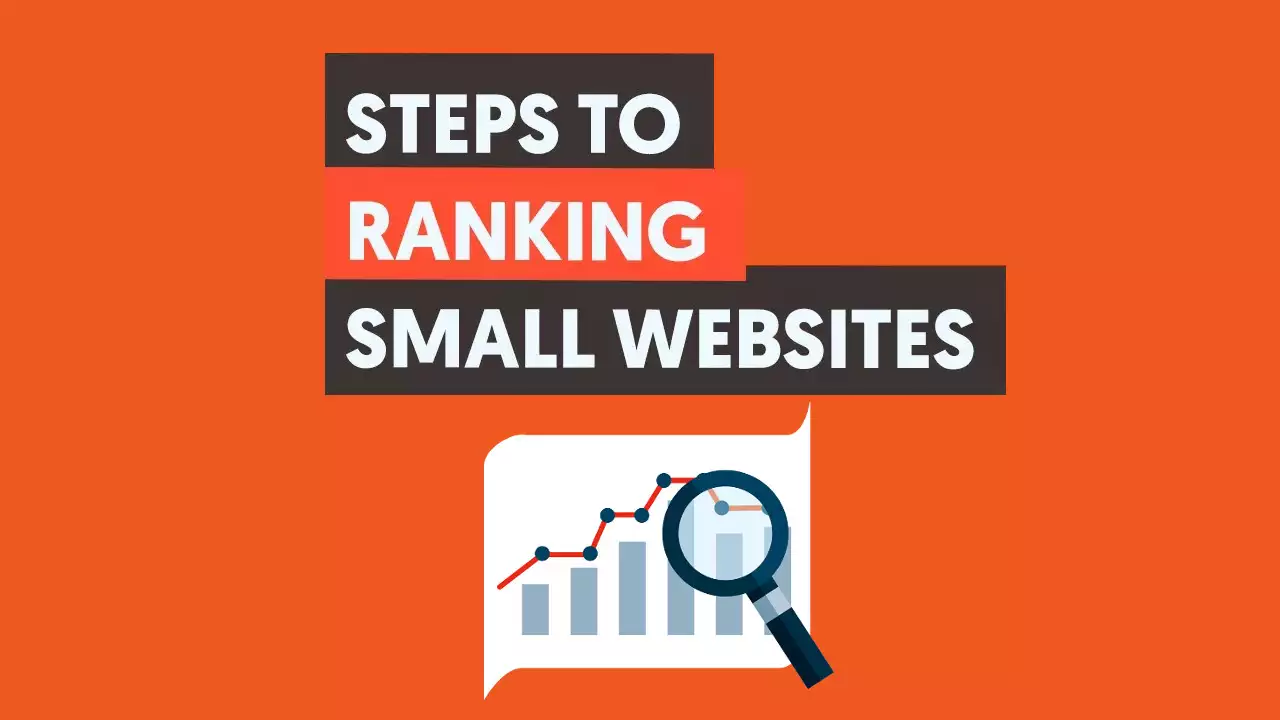You start a website but you still haven't put out a lot of content. You want to attract a lot of organic visitors from search and social but haven't been able to build any back links or promote your content much at all. What should you do? Hi everyone, I'm Neil Patel and today I'm going to share with you six actionable steps for better rankings for small websites.
1. Capitalize on local SEO
If you're a local business, SEO is much easier than if you're targeting large audiences. Google can easily identify when someone is searching for a business that should be in physical proximity.
Here are some steps that you'll want to take.
Step one, claim your Google My Business listing.
Step two, add great photos of your facilities, your staff, your clients or services, your products, your food, all that really helps.
Step three, optimize your website. Create a dedicated contact page. The contact page should have your address as well, and a map listings of where you're located with cost streets as well. Have a separate location page for each business location if you have multiple locations. Include the main address of your business, for all your website pages in the footer. You also want to make sure you have a phone number, the phone number shouldn't be 100 number, it should be localized, and you want to make it so when someone can click on that number and it can just dial from their mobile devices. Also add in testimonials to separate your page from your homepage and other businesses in your area. That way people know that hey, you're a standard business, good service, good product. And of course you want to add local business schema markup.
The fourth step, claim other relevant business profiles. People will frequently use other websites to get information about the business. Yelp, TripAdvisor, Facebook, they're all good examples.
Step five, always collect client testimonials. I can't emphasize this enough, reviews are super important especially for localized business, and try to go above and beyond and do video reviews. People love videos, they know it's real, they can resonate much more.
2. Focus on video
Videos are beginning to dominate certain niches such as how to, do it yourself, instructional type videos. Did you know one of the most popular videos on the web is how to tie a tie. You would think after people watch it once or twice they would know how to tie a tie, but I guess not. Or how to change a tire, all these videos are very popular.
People gain and retain a lot of useful information when they watch videos compared to reading an article. So capitalize on YouTube, as it needs to generate traffic to strategic assets of your website. YouTube is the second biggest search engine after Google and Google Images. And according to SimilarWeb, YouTube is growing in popularity when it comes to social media. And it's actually the second most popular site. Facebook, on the other hand has been declining in traffic for the last two years according to SimilarWeb.
3. Make quality content
Make quality content and hire good content writers on a budget. Google typically ranks big sites with in depth content. This can come off as a struggle for smaller websites in terms of ranking. When you're startup with a small website, finding ways to create valuable content and write it for your audience with a limited budget can be tough. Well, who said just because you own a website that you need to be an amazing writer, nobody.
You can actually go to places like ProBlogger job board and find writers for pennies on the dollar. For $20, $30, $40 you can actually get amazing piece of content written. Yeah, sometimes you may have to pay $200, but you can start off much smaller.
So now that you know where to find a writer, here's a process that you need to go through to get content to rank really well on Google.
The first thing you need to do is essentially create blog outlines essentially detailing every aspect of the blog that you want to be touched upon. You can have the writer help with this, but you know your field, you're the expert breakdown what should be included in the article. When doing this, you need to do some research on SERPs to see what kind of posts currently rank really well. And you can go to the UberSuggest content ideas, type in keywords in your space, it'll give you idea of what does well based on social shares, search traffic and backlinks. These outlines are typically going to be 1000 to 2000 words long, and then when you give it to the writer, they'll be able to take it and then fill in the blanks and create that amazing crafted piece of content that you can publish on your website, and it'll do well.
These outlines are typically going to be 1000 to 2000 words long, and then when you give it to the writer, they'll be able to take it and then fill in the blanks and create that amazing crafted piece of content that you can publish on your website, and it'll do well.
4. Go after keywords that big brands don't care to target
Rank on Google is harder than ever, especially with big brands ranking for primary keywords or head terms. Trying to beat these guys on the head terms is nearly impossible and a waste of your time. So here's approach that'll get you amazing results and quality traffic with much less effort. It's targeting longtail keywords. These are three, four, five word queries that drive less traffic, but when you get visitors from they're much more likely to convert.
The reason you want to go after longtail terms is again, they're easier to go after, and they convert well. So a good example of this is what foods are high in fiber right? Much less competitive than food but when someone Google's food, what are they really looking for.
And when you look at what foods are high in fiber, it has an SEO difficulty of 15 and a monthly search volume of 14,800. It's much less traffic, but it's much easier to rank. And according to recent research by WordStream, the top 10% of landing pages convert at 11.45%. The average conversion rate for longtail keywords is 36%. You see how much better they are? That's what you want to go after longtail terms. If you're not going after them, you're missing out.
5. Target topics instead of queries
This can be done through a process of creating content clusters. Having pillar pages for more competitive terms that you want to rank for and then create articles on the longtail variations of those keywords. Then interlink these articles from one to another so that way they're mutually reinforcing each other and that'll help you rank for everything. A good example of this is The Beginner's Guide to SEO by Moz. It's why they rank so well.
6. Focus on creating in depth, authoritative content
According to a recent study by ezoic, more and more small businesses are beginning to compete in the ranks with varied competitors. While it may seem that big brands are always at the top of Google, well, the truth is Google results grow more diverse every year, with more of the core updates coming to light. Big brands are losing real estate in the SERPs to small and medium-sized sites, to snippets and video content each year.
In 2018 small medium-sized websites that directly competed with Alexa top 1000 sites, saw an average increase of 34% in organic traffic. What's more, is these sites produce about one eighth as much new content while still adding over 1,312 new organic keywords over the course of the year, and this is according to ezoic again.
This means that smaller publishers with lower domain authority sites still can contribute and disrupt bigger brands in the SERPs. One of the reasons for this is Google's diversity update of 2019. This allowed for smaller sites to have more of an opportunity to rank in the SERPs by only allowing a specific domain to rank only up to two spots for any one given keyword. Smaller sites that are writing long form content and up content, have a good shot of ranking well on Google because that's what they love. So the big takeaway I have for you focus on the strategies that I talked about above, if you implement them, even a handful of them, you'll do better and better even if you don't have the high domain authority or domain score compared to some of these bigger brands.


No comments yet